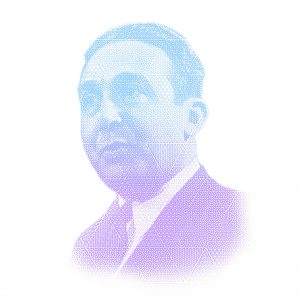Attention, expertise
and security
Attention, expertise
and security

Leo Szilard (February 11, 1898 – May 30, 1964) was a Hungarian-American physicist and inventor. He
conceived the nuclear chain reaction in 1933, patented the idea of a nuclear fission reactor in
1934, and in late 1939 wrote the letter for Albert Einstein signature that resulted in the
Manhattan Project that built the atomic bomb. According to György Marx he was one of the
Hungarian scientists known as The Martians.
Szilard initially attended Palatine Joseph Technical University in Budapest, but his engineering
studies were interrupted by service in the Austro-Hungarian Army during World War I. He left
Hungary for Germany in 1919, enrolling at Technische Hochschule (Institute of Technology) in
Berlin-Charlottenburg, but became bored with engineering and transferred to Friedrich Wilhelm
University, where he studied physics. He wrote his doctoral thesis on Maxwell demon, a long-
standing puzzle in the philosophy of thermal and statistical physics. Szilard was the first to
recognize the connection between thermodynamics and information theory.
In addition to the nuclear reactor, Szilard coined and submitted the earliest known patent
applications and the first publications for the concepts of electron microscope (1928), the linear
accelerator (1928), and the cyclotron (1929) in Germany, proving him as the originator of the idea
of these devices. Between 1926 and 1930, he worked with Einstein on the development of the
Einstein refrigerator. After Adolf Hitler became chancellor of Germany in 1933, Szilard urged his
family and friends to flee Europe while they still could. He moved to England, where he helped
found the Academic Assistance Council, an organization dedicated to helping refugee scholars
find new jobs. While in England he discovered a means of isotope separation known as the
Szilard–Chalmers effect.
Foreseeing another war in Europe, Szilard moved to the United States in 1938, where he worked
with Enrico Fermi and Walter Zinn on means of creating a nuclear chain reaction. He was present
when this was achieved within the Chicago Pile-1 on December 2, 1942. He worked for the
Manhattan Project's Metallurgical Laboratory at the University of Chicago on aspects of nuclear
reactor design. He drafted the Szilard petition advocating a demonstration of the atomic bomb,
but the Interim Committee chose to use them against cities without warning.
After the war, Szilard switched to biology. He invented the chemostat, discovered feedback
inhibition, and was involved in the first cloning of a human cell. He publicly sounded the alarm
against the possible development of salted thermonuclear bombs, a new kind of nuclear weapon
that might annihilate mankind.